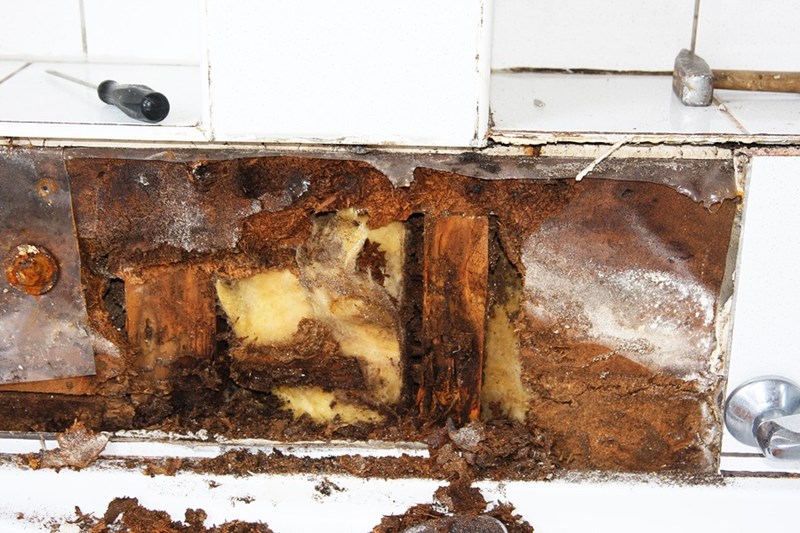How to Stop Bathroom Water Damage
How to Stop Bathroom Water Damage
Blog Article
The content following next on the subject of How to Repair and Prevent Bathroom Water Damage is incredibly stimulating. Don't overlook it.

The bathroom is exceptionally at risk for damp buildup and prospective water damages due to the regular use water in it. This write-up provides basic examination techniques to assist spotting water damages hazards.
The regular use water in the restroom makes it exceptionally vulnerable for damp buildup as well as possible water damage. By examining it consistently, you can decrease water relevant damages.
The following collection of evaluations is simple to perform as well as need to be done once in every three months in order to maintain your bathroom healthy and also to prevent potential water damages brought on by the bathtub, the shower, pipe joints as well as plumbing, sinks, closets, and the toilet
Do not overlook doing these examinations as well as be detailed while performing them. Bear in mind that these basic inspections can save you a great deal of money by offering very early indications for water damage
Sinks and also Cabinets
Sinks and cupboards are revealed to moisture and humidity day-to-day and are typically forgotten. Inspect on a regular basis under the sink and also on the countertop above it. Fix any kind of drip in the trap as it may recommend drainpipe troubles. Take a look around the sink, sluggish draining pipelines might show a blocked drain. Replace sink seals if they are split or loose.
Tub and Shower
The shower and tub need unique attention and maintenance. Examine the tiles and replace if split. Make certain that there is no missing out on grout between the floor tiles. Evaluate and replace broken caulking at joints where the walls satisfy the floor or the tub. Blocked drains pipes and also pipelines issues will certainly protect against the bath tub from drying out and also might show significant troubles under the bathtub. Consult with a specialist immediately to stop architectural damages. Pay attention to stainings or soft locations around the bath tub walls as they may suggest an interior leak.
Plumbing
Signs for water damage are difficult to discover because a lot of pipelines are set up inside the wall surfaces.
Pay unique focus to floor covering and also wall surfaces wetness as well as spots as they might suggest an undetectable plumbing issue. Check wetness degrees in adjoining rooms as well.
The Toilet
The toilet is a vulnerable water junction. Examine the water lines and also look for leakages around the bathroom seat, in the pipe, and under the water container. If you discover any type of signs of dampness on the floor around the toilet, look for leakages in the toilet edge and container seals.
Understand that hanging toilet dish antiperspirants boosts the possibilities for blockages.
Water Damage Signs In The Bathroom To Avoid Cleanup
Musty smell
This is one of the easiest signs to catch because musty smells are so odorous. The damp, earthy, moldy smell should be a big red flag. The smell will develop when moisture gets trapped in surfaces, and begins to facilitate mold growth. Leaking pipes under cabinets, inside walls, and behind shower fixtures will cause moisture to stay trapped and not dry, which will lead to mold growth and spread. As soon as you notice any musty smells in your bathroom, have it checked for hidden water damage and cleanup signs.
Visible mold
If the smell isn’t there to give it away, sometimes you will actually see mold growth. Finding mold in your bathroom is a serious problem, because mold is very harmful to your health. By the time mold growth is visible, it also means that water damage has already occurred and been present for some time. The only way the mold problem can be resolved is to find the source of the moisture and get it stopped. To safely and adequately remove mold, you need to have professionals handle the remediation. Do not waste any time in getting mold problems addressed, fixed, and sanitized so that you can protect you and your family from the many respiratory symptoms caused by mold exposure.
Damaged floors
Bathroom floors should be able to withstand some exposure to water while still remaining in good condition. However, when excess exposure or water leaks occur, they will begin to damage even the most water-resistant flooring. If you notice any cracking, bubbling, staining, or warping on your bathroom floors, there is probably a water leak somewhere causing the distortion. If you notice areas of the floor have become softer, or even have a spongy feeling, there is probably damage to the subfloor. Subflooring is typically made up of plywood. When plywood is exposed to water or moisture, it will absorb it. Once it has become saturated, the weight of the excess water will cause the wood to swell and soften. Check the floors in your bathroom frequently to catch any of these sings before they lead to damaged subflooring.
Changes on walls
When water leaks behind walls, it will cause changes in the drywall. Peeling plaster, blistering paint, and soggy wallpaper are all good indicators that excess water is building up behind the wall. Water leaking behind drywall will cause it to swell and be soft to the tough. If you start to notice gaps along the trim of your walls, or where tile meets the wall, it could also be a strong indicator that there is a leak behind the wall. Any changes, distortion, or damage on the walls should be evaluated as soon as you notice it to prevent further water damage and cleanup.

I was made aware of that editorial on Looking for Signs of Water Damage in the Bathroom from a good friend on another web page. Sharing is nice. You won't know, you may just be helping someone out. Thank you so much for your time spent reading it.
Information Report this page